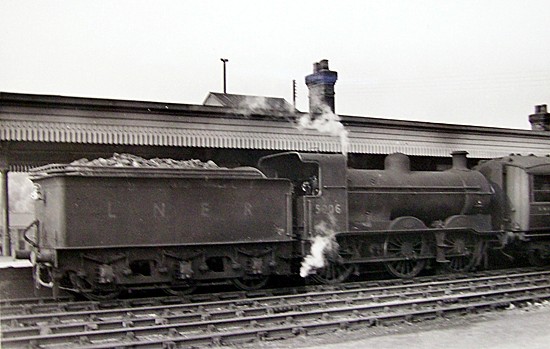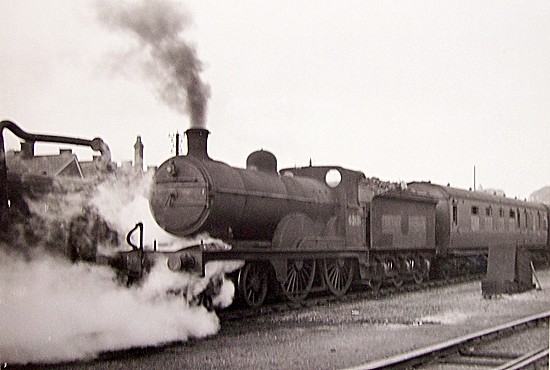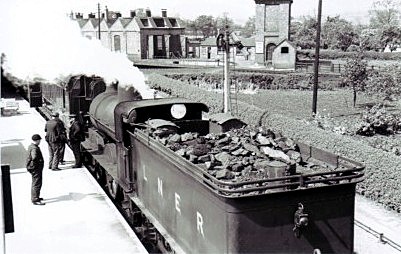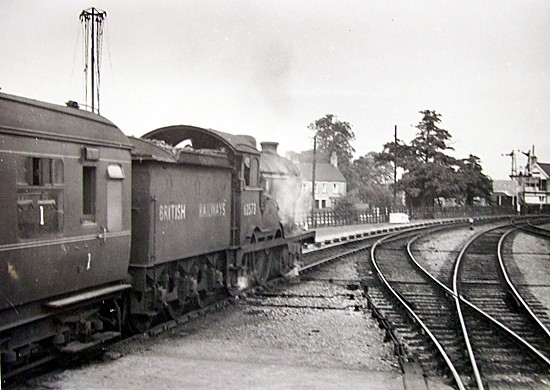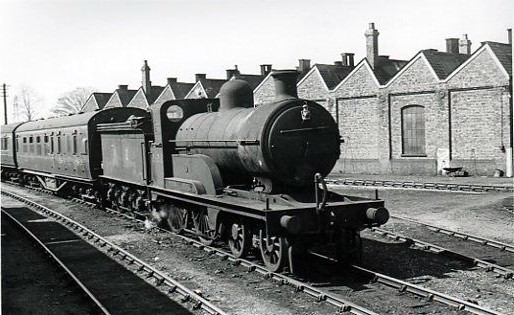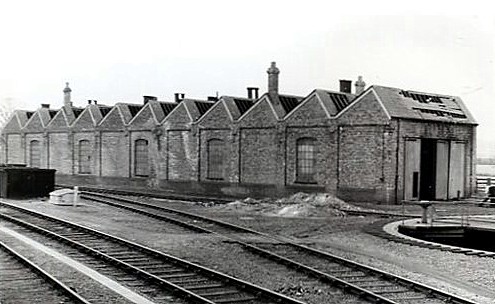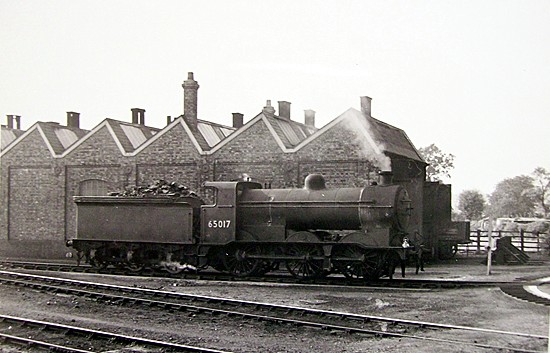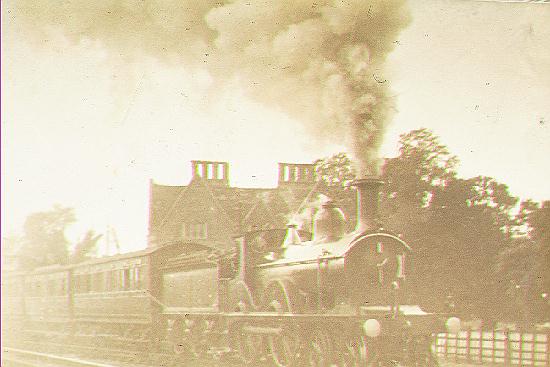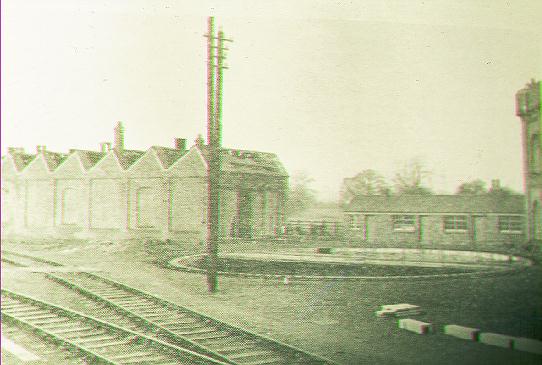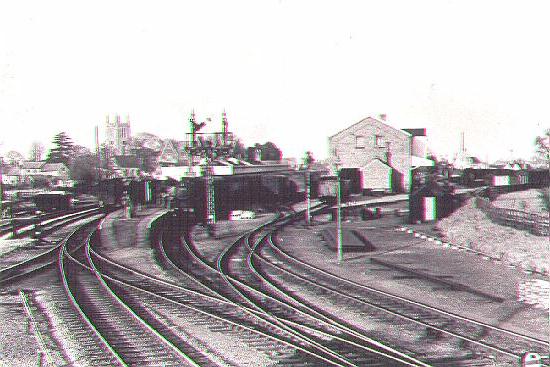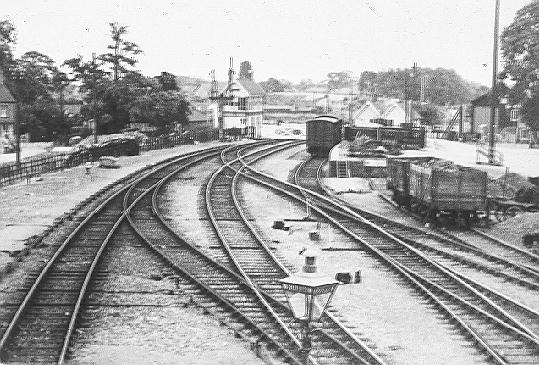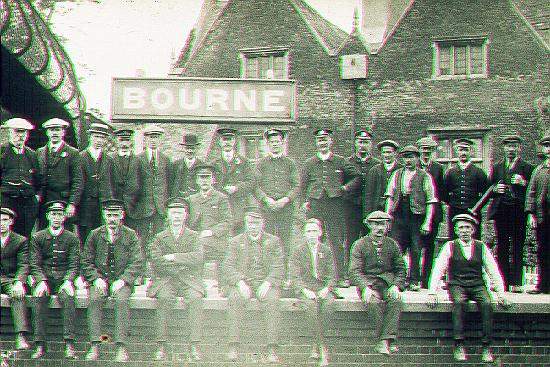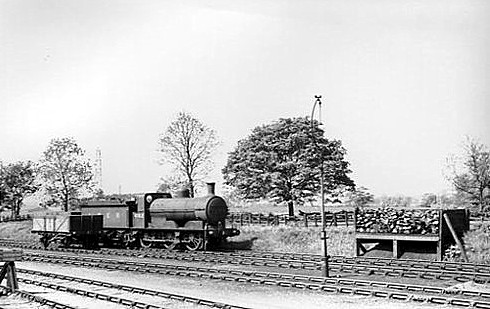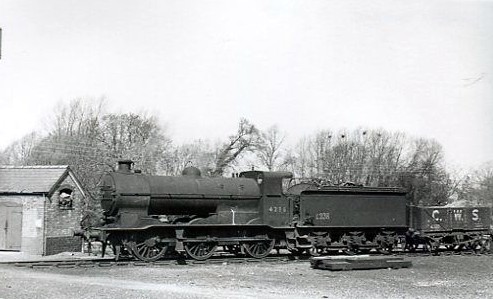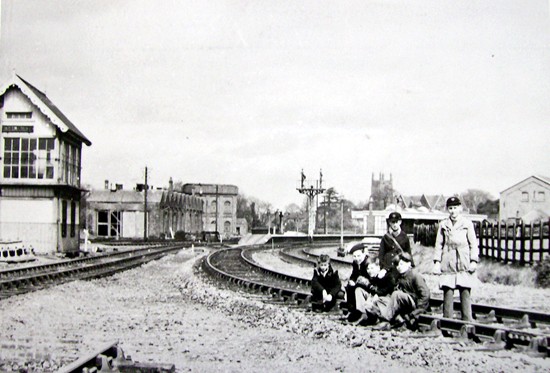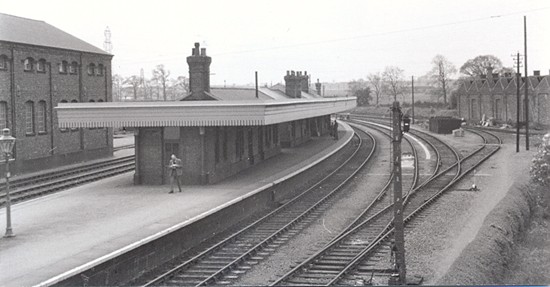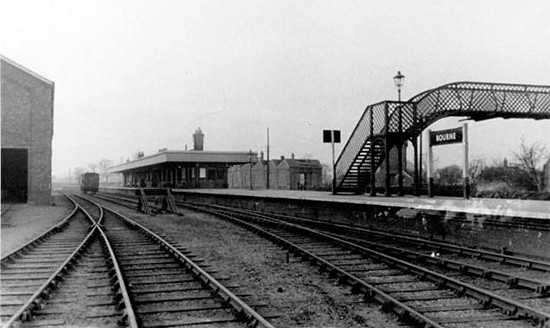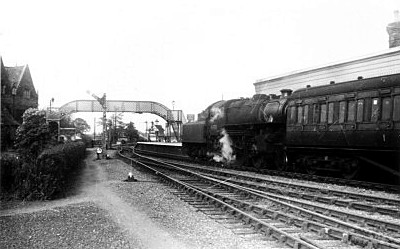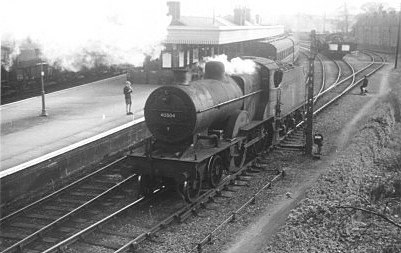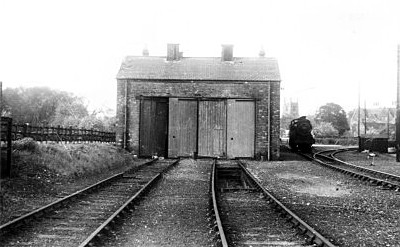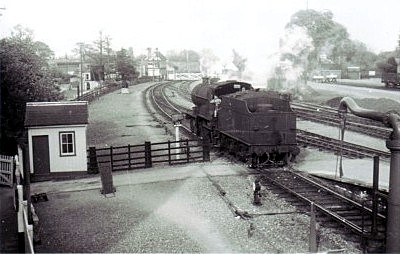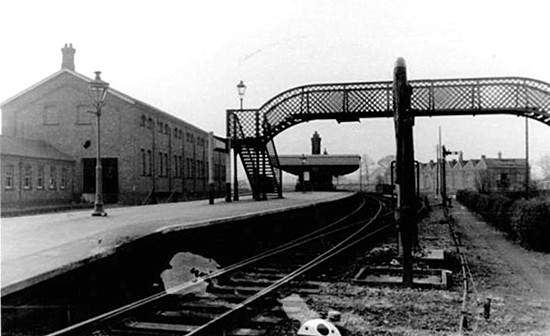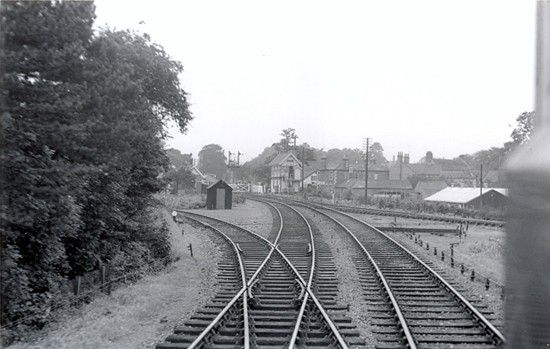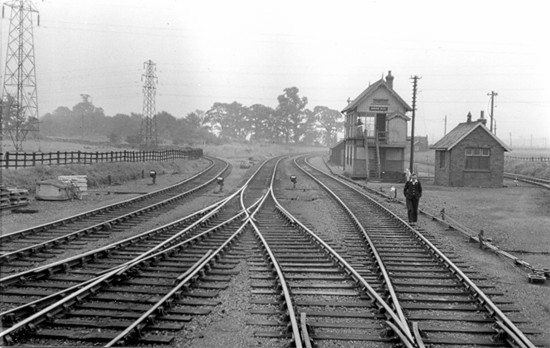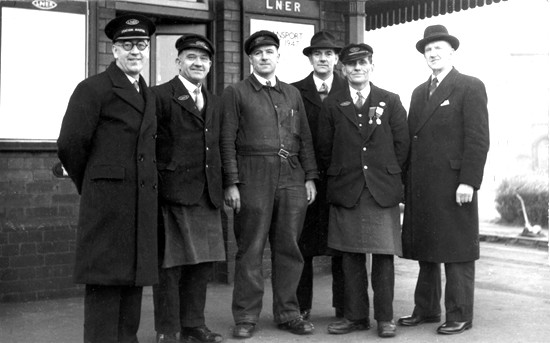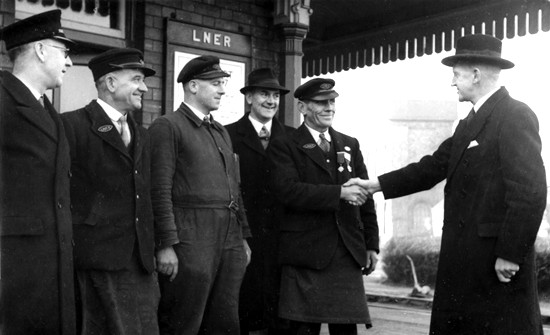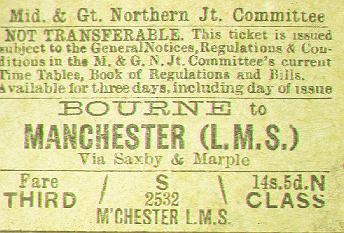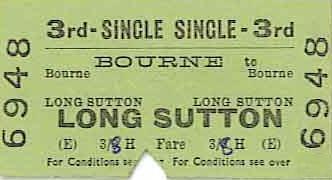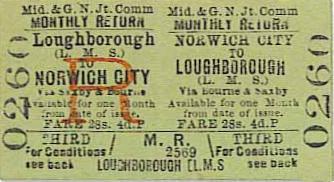|
|
|||
|
These pictures of locomotives under steam date from 1935 when the line
was run by the LNER to 1949 after it had been taken over by British
Railways, |
|||
|
|
|||
|
|||
|
|
|||
|
|
|||
|
|
|||
|
|
|||
|
|
|||
|
The Red Hall provides the backdrop for this passenger train leaving Bourne railway station, circa 1880, when more than 40 steam engines a day rattled past the building which served as the booking office yet it has survived to this day. |
|||
|
|
|||
|
The maintenance of a railway service, even for a small town such as Bourne, needed workshops and engine sheds which can be seen here in this photograph from circa 1880. The water tower which supplied the engines can be seen on the extreme right and the circular structure in the middle is the turntable used to turn the engines for their return journeys. When the station was dismantled, this vital piece of equipment was given to the Nene Valley Railway, a preserved system on the outskirts of Peterborough, where it is still in service to this day. The water tower was also removed at that time but it was so soundly built that it took demolition engineers five attempts to blow it up. |
|||
|
|
|||
|
The Red Hall station complex and platform before the footbridge |
|||
|
|
|||
|
This is the view of Bourne railway station for passengers approaching from the south west in 1959, the many lines indicating the importance of the junction in the system servicing both north and south. Beyond the station complex can be seen the tower of the Abbey Church with Brook Lodge in front and Baldock's Mill on the far right. |
|||
|
|
|||
|
The Bourne East signal box can be seen in the middle distance next to the
South Street level crossing and the twin gables of the crossing keeper's
cottage with a cattle loading pen in front. The lamp in the foreground is
one of four that adorned the station platforms and were preserved by Mr
Andrew Cooke when the station complex was demolished and he later erected
them
alongside the main drive of his house, The Croft, in North Road.` |
|||
|
|
|||
|
One of the major benefits of the Victorian railway era was the provision of employment and all jobs offered were prized by those who filled them because they were comparatively well paid and secure. Even a small railway station such as Bourne had a large staff, pictured above with visiting dignitaries circa 1890, as well as manual workers pictured outside the Red Hall (below) around the same date. |
|||
|
|
|||
|
|||
|
|
|||
|
|
|||
|
Schoolboy train spotters trespassing on the tracks circa 1948 |
|||
|
|
|||
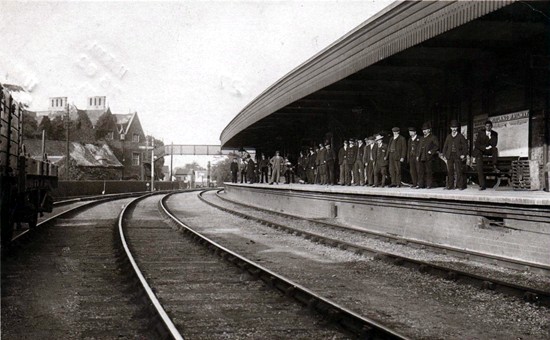 |
|||
|
Busy day at the railway station circa 1950. |
|||
|
|
|||
|
A rare photograph of Bourne railway station from circa 1956 showing the footbridge from the booking office at the Red Hall to the main platform where a train is waiting. |
|
||
|
|||
|
|||
|
|||
|
|
|||
|
|
|||
|
|
|||
|
Three photographs (above) of the railway station and rail
complex all dating |
|||
|
|
|||
|
In 1950, a senior executive from British Rail arrived in Bourne to present service awards to three engine drivers, Albert Faulkner, Len Carrot and Arthur Swinn, who are pictured above and below with the station master Albert Scott and another staff member on the left. |
|||
|
|
|||
|
TICKETS FROM THE GOLDEN AGE OF TRAVEL
Travel was strictly regulated during the period of private ownership. It was an offence to board a train without a ticket bought at the booking office before departure and it was punched on leaving and again on arrival and often by a conductor on the train. These tickets, issued in the late 19th century, enabled the purchasers to travel third class from Bourne to Manchester for 14s. 5d., which is 75p in today's money, and to Sheffield third class for 12s. 3d.
Two more tickets showing how far you could travel by rail from Bourne, to Long Sutton (above) for 3s. 8d. and between Loughborough and Norwich (below), via Bourne and Saxby. The ticket from Long Sutton to Bourne is a third class single, i e one way, while the other is a monthly third class return for a very long journey between the Midlands and East Anglia costing £1 8s. 4d. but one that illustrates how important the railways were to the travelling public.
|
|||
